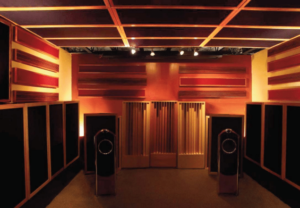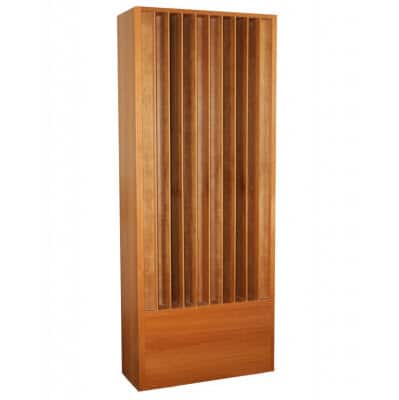Acoustic treatment can be confusing and challenging if you’re planning to build a home theater. First, you need to decide how much and of what kind you must deal with. The size of the room you have selected to house your home theater is the first thing you need to look at.
Room size determines room modal and anti modal issues and you must be certain where these energy pockets lie within your room and how much of an acoustical issue they present. Are you sitting in one of these room modes? If you are, you will hear some frequencies louder than others and then some frequencies not at all. What if your seating position could not let you hear the center channel vocal track clearly? Lets look at the low frequency room modal issue first and work our way up to the middle and high frequencies.
What You Need To Think About
Acoustic treatment must start by focusing on the low frequency issues within your room. How many room modes do you have? How large are they? Should you make the room smaller or larger to deal with these room modes. Both are sensible options when you are dealing with room modes because taming and managing them requires study to determine their location and then more study to find out what type of low frequency absorption to use. If you do not get the low frequency issues in your room resolved first, before any equipment is installed, you are always working up hill and at a disadvantage acoustically.
This video I made helps explain room modes and how they impact the sound quality in your home theater.
Low Frequency Absorption
What type and how many low frequency absorbing units to buy for you home theater must be considered. First, you must locate all the room modes and then apply the correct low frequency acoustical treatment. Which treatment will you use. There are three. You have diaphragmatic, membrane, and Helmholtz.
Diffusion And Absorption Treatment
What do all of these mean? They are all different in form and function. You have to figure all of this out before you put your equipment in and determine your seated position. Make sure your amplifier and seated position are not within a room mode. Amplifiers can amplify all forms of vibrational pressure.
Sound Diffusion
Poor sound diffusion within small room acoustics is one of the four main acoustic distortions. Sound diffusion creates a more realistic and lifelike sound field, that does not sound like you are in a “box” or room which you are. Sound diffusion separates and adds definition to our music and vocals. Quadratic diffusion can spread sound out in both horizontal and vertical dimensions creating two dimensions of sound diffusion out of a possible three within our rooms. Sound diffusion can make the walls in our rooms acoustically appear to be farther away and thus we achieve a room sound associated with a much larger room.
Quadratic Diffuser Absorber
Sound Absorption And Sound Absorption
When selecting an acoustic treatment package, you must address absorption, both low, middle, and high frequency, along with sound diffusion. These are the areas of treatment that you must focus upon. You must address the needs of the front and center along with the sides and rear channels. Each individual channel in your home theater system must be dealt with using the correct tool. Each channel has different needs and each acoustical treatment is designed to satisfy certain acoustical needs.
Step By Step
Our first step is to locate all high acoustical pressure areas and then apply the correct type and amount of treatment. The corners of your room are the least important place to look for excess pressure areas. Your room is full of these high pressure areas, and the corners are the least likely place to look. Sound diffusion must be applied to all wall surfaces that you want to acoustically disappear. There are different diffusion types and their correct positioning and application are critical if you are to avoid some of their acoustic anomalies.
In Summary
If you would like to learn more about acoustic treatment options please sign up for my free videos and ebook by joining the mailing list here. I send room tuning tips and things for you to test in your room every Wednesday. They are easy to follow and will really help you enjoy more of your music.
Alternatively feel free to contact me directly at: 520 – 392 – 9486 MST or info@acousticfields.com. You can see more of my research and development story and why I started Acoustic Fields at: https://www.acousticfields.com/who-we-are/.
Thanks and speak soon
Dennis









